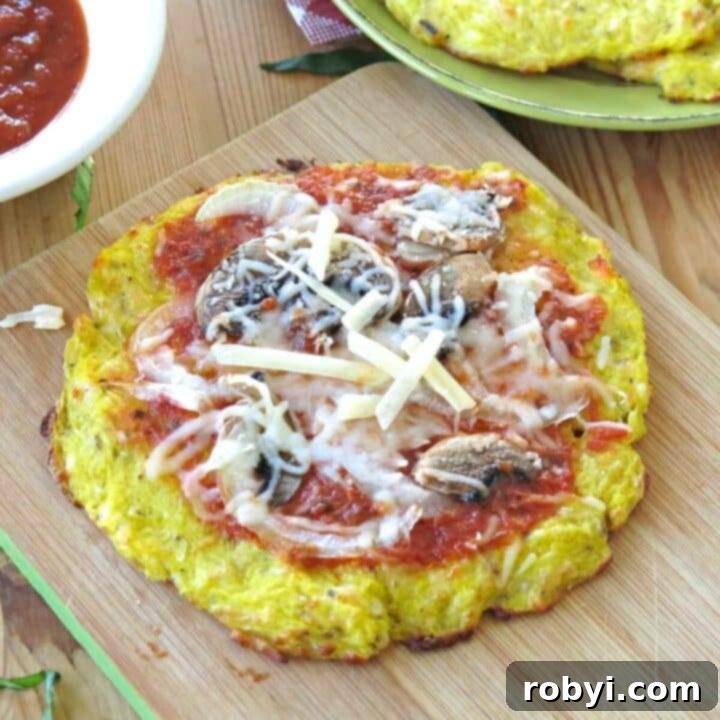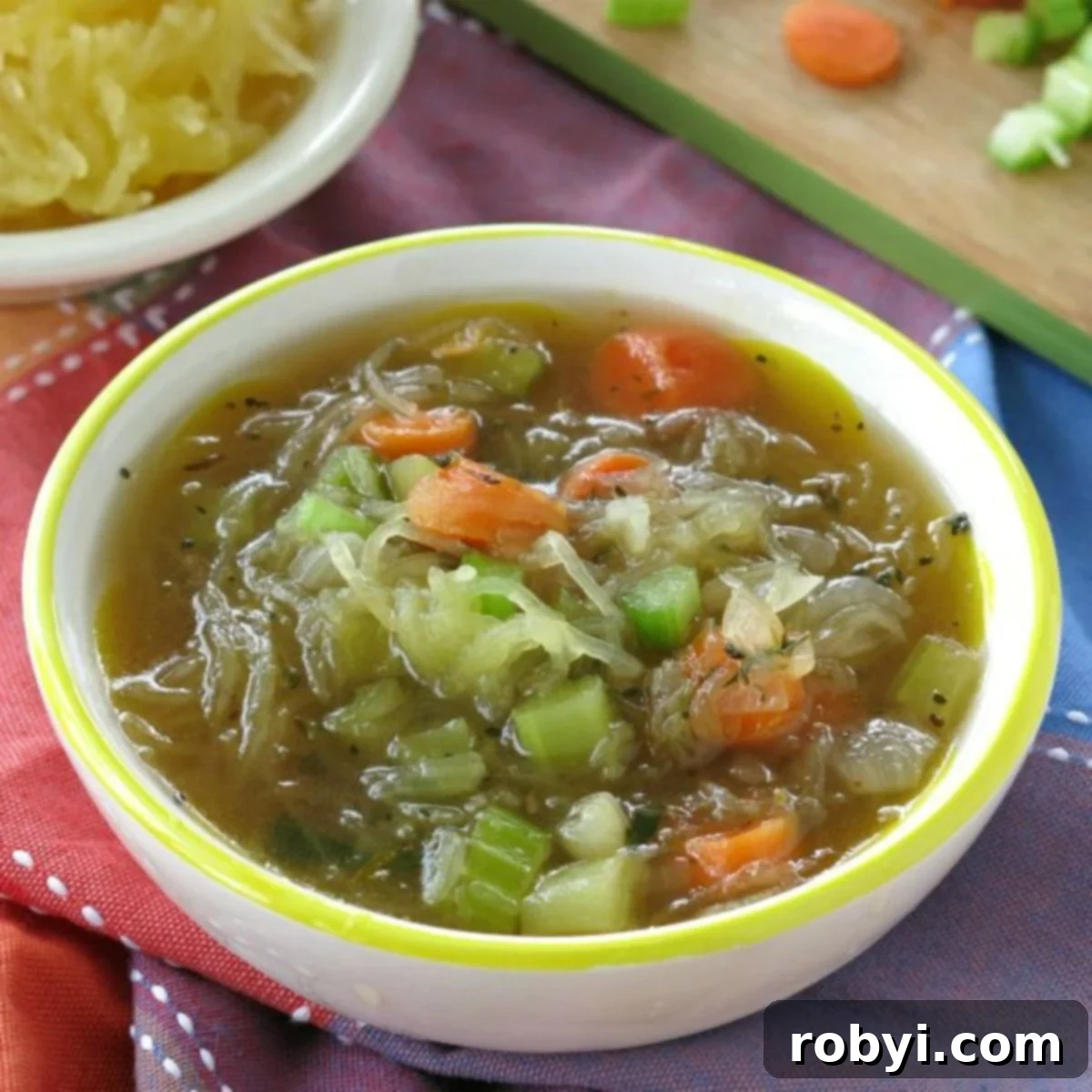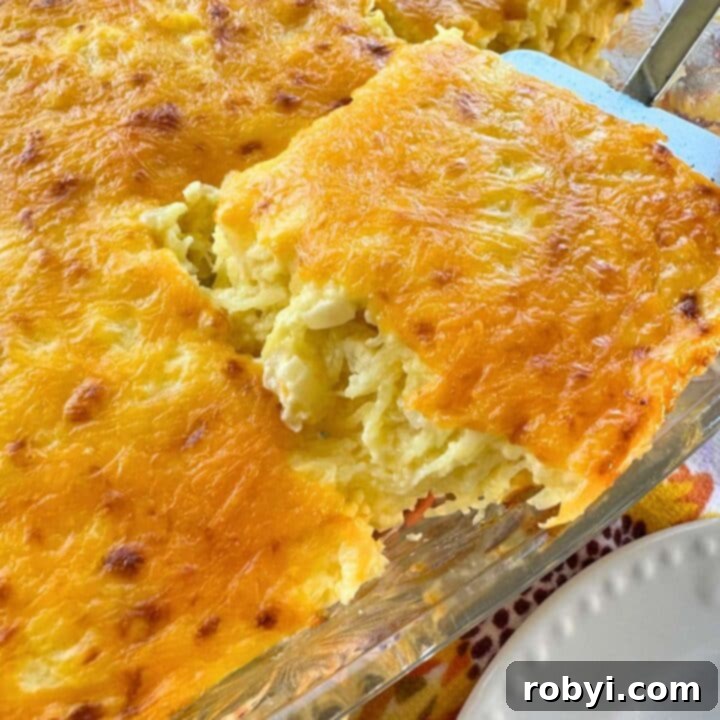Effortless Whole Spaghetti Squash: Your Guide to Slow Cooker and Oven Roasting
Imagine enjoying wholesome, delicious spaghetti squash without the struggle of cutting it raw. This dream becomes a reality once you master cooking spaghetti squash whole, either in a slow cooker or by roasting it in the oven. This game-changing approach eliminates the most challenging part of preparing this versatile gourd, making healthy, low-carb meals incredibly accessible and enjoyable. Say goodbye to risky knife maneuvers and hello to perfectly cooked spaghetti squash every time!
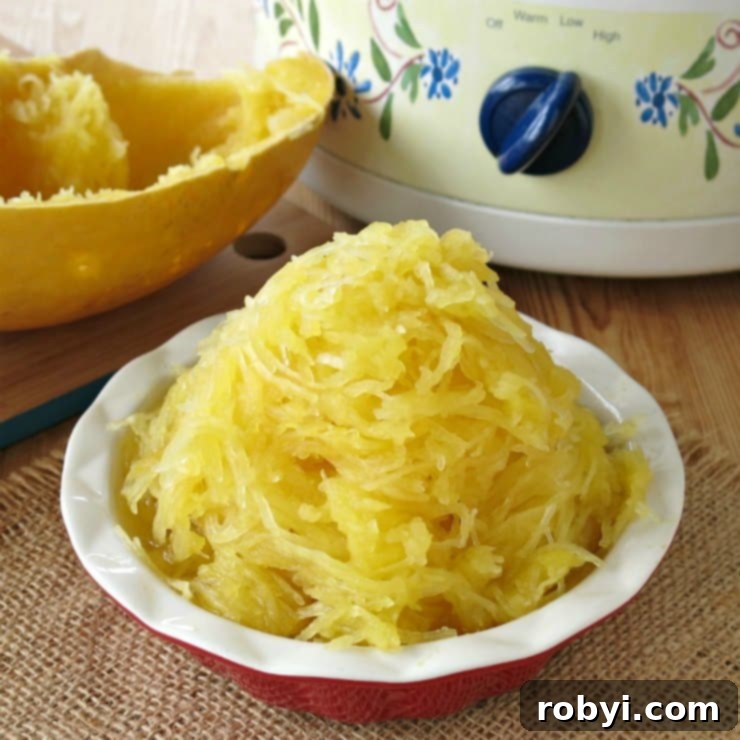
Spaghetti squash is a marvel of nature, offering a fantastic low-carb, gluten-free alternative to traditional pasta noodles. While its natural flavor is quite mild, this blandness is actually a superpower, allowing it to beautifully absorb the flavors of whatever sauces, seasonings, and ingredients you pair it with. This is where the true magic of spaghetti squash unfolds, transforming into a vibrant base for countless culinary creations.
Once you adopt these simple, whole-cooking methods, you’ll find yourself effortlessly incorporating spaghetti squash into your regular meal rotation. Imagine delightful dishes like Spaghetti Squash Pizza Crust, creamy Spaghetti Squash Au Gratin, or a comforting bowl of Spaghetti Squash Soup becoming staples in your kitchen. These recipes are not only nutritious but also incredibly satisfying, proving that healthy eating can be both easy and delicious.
Historically, many recipes suggest cutting spaghetti squash in half before roasting, as demonstrated in our Spaghetti Squash Alfredo. While this method certainly yields fantastic flavor, especially when the cut halves are brushed with olive oil and seasoned, it often presents a significant challenge: the raw squash’s incredibly hard exterior. Attempting to slice it open can be a daunting and even hazardous task, leading many home cooks to avoid this wonderful vegetable altogether.
But fear not! There are far easier, safer, and equally delicious ways to cook spaghetti squash. We’re thrilled to share two foolproof methods that allow you to cook the squash entirely whole, requiring absolutely no pre-cooking cutting. You’ll only need to cut it once the skin is tender and easy to slice through, making the entire process stress-free. This approach ensures maximum safety and convenience, empowering you to enjoy spaghetti squash without any kitchen acrobatics.
What’s more, these convenient whole-cooking techniques aren’t limited to just spaghetti squash. Similar processes can be applied to other hard-shelled gourds like butternut squash in a crock-pot and acorn squash, broadening your repertoire of easy, healthy vegetable preparations. Discover these and many more clever kitchen shortcuts in our comprehensive cooking tips and guides section, designed to make your culinary journey smoother and more enjoyable.
Slow Cooker Spaghetti Squash: The Hands-Off Method
The slow cooker (or crock-pot) is an absolute game-changer for cooking whole spaghetti squash. This method offers unparalleled flexibility and ease, making it perfect for busy individuals. You can set it and forget it, allowing the gentle, consistent heat to work its magic over several hours. The cooking time is also remarkably forgiving, so a little extra time in the slow cooker won’t ruin your squash.
Preparation for Slow Cooker Cooking
- Wash Thoroughly: Begin by thoroughly washing the outside of your spaghetti squash under cool running water to remove any dirt or debris.
- Puncture the Skin: This crucial step prevents the squash from exploding due to steam buildup. Using a sharp knife, carefully stab the skin all over the squash. For a medium-sized squash, aim for at least 10-12 punctures. You don’t need to insert the knife deeply; just the tip (about ½ inch) is sufficient to create steam vents.
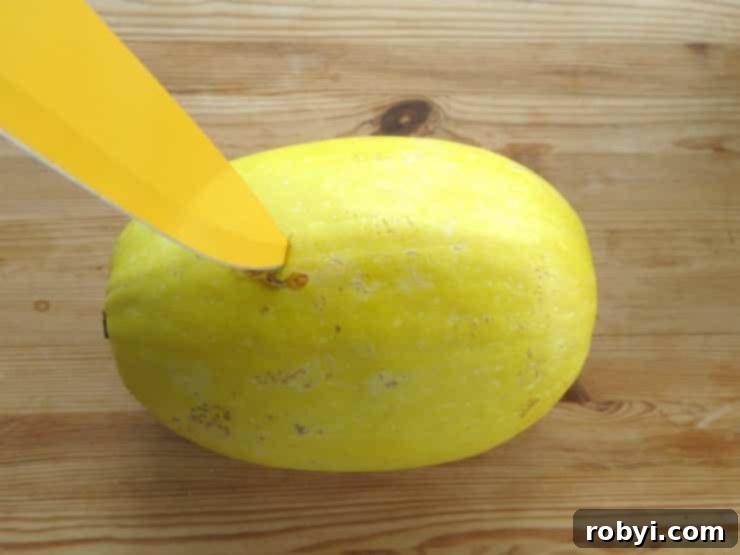
Slow Cooking Instructions
- Load the Slow Cooker: Carefully place the prepared spaghetti squash into your slow cooker. There’s no need to add water; the squash will steam perfectly in its own moisture.
- Set the Time: Cook on LOW for 5-6 hours or on HIGH for 3-4 hours. The exact timing may vary slightly based on the size and shape of your specific squash.
- Check for Doneness: The squash is done when the outside skin can be easily pierced with a knife or fork. It should feel tender, not firm.
- Cool and Cut: Once cooked, allow the squash to cool for about 10 minutes. This makes it easier and safer to handle. Using oven mitts or a clean dish towel, carefully transfer it to a sturdy cutting board.
- Halve and Shred: With the squash now soft, easily cut it in half. Scoop out the seeds and fibrous strands from the center. Then, use a fork to gently scrape and loosen the spaghetti-like strands of flesh from the shell.
Expert Tip: When purchasing spaghetti squash for slow cooking, always ensure it will comfortably fit inside your slow cooker. A squash that’s too large will prevent the lid from sealing properly, affecting cooking times and results.
Baked Spaghetti Squash – Whole: Oven Roasting for Flavor
Roasting whole spaghetti squash in the oven is another fantastic method that requires minimal effort and delivers a wonderfully tender result. The dry heat of the oven can even impart a slightly richer flavor compared to slow cooking, particularly if you choose to lightly season the skin before baking. This method is straightforward and highly effective for achieving perfectly cooked spaghetti squash.
Preparation for Oven Roasting
- Preheat Oven: Start by preheating your oven to a robust 425 degrees Fahrenheit (220 degrees Celsius).
- Wash and Prick: As with the slow cooker method, thoroughly wash the exterior of the spaghetti squash. Then, use a sharp knife to prick the skin all over, creating numerous small holes for steam to escape. This is essential to prevent pressure buildup and ensure even cooking.

Oven Roasting Instructions
- Place on Baking Sheet: Position the whole, pricked spaghetti squash on a sturdy sheet pan. You can line the pan with parchment paper or aluminum foil for easier cleanup.
- Roast to Perfection: Bake for approximately 30 minutes. Halfway through the cooking time, carefully roll the squash over to ensure even cooking and browning on all sides. The exact cooking time may vary based on size; larger squash might need an additional 10-15 minutes.
- Cool and Cut: Once roasted, remove the squash from the oven and allow it to cool for about 10-15 minutes. The squash will continue to cook slightly from residual heat during this resting period, further tenderizing the flesh. Use oven mitts to transfer the squash to a cutting board.
- Halve and Shred: The skin should now be soft enough to cut the squash easily in half. Scoop out the seeds and stringy bits from the center. Finally, use a fork to gently scrape the cooked flesh, creating those distinctive spaghetti-like strands.

Which Direction Should You Cut Spaghetti Squash?
The direction you cut your cooked spaghetti squash can actually influence the length and appearance of its strands, a subtle but important detail for certain dishes:
- For Long, Pasta-Like Strands: If you’re aiming for long, noodle-like strands that closely resemble traditional spaghetti, cut the cooked squash in half crosswise (around the equator, horizontally). The natural growth pattern of the squash’s flesh creates these long, circular strands, making this cut ideal for dishes where the squash truly stands in for pasta, such as spaghetti squash marinara or alfredo.

- For Shorter Strands: For most other applications, or if you prefer shorter, more manageable strands, cutting the spaghetti squash in half lengthwise (from stem to end, vertically) works perfectly. This is the more common method and is suitable for almost any recipe, from casseroles to side dishes.
Frequently Asked Questions About Cooking Whole Spaghetti Squash
Here are answers to some of the most common questions regarding cooking spaghetti squash whole, ensuring you have all the information you need for a successful culinary experience:
Do you need to wash spaghetti squash?
Absolutely, yes. It’s imperative to always wash the outside of the spaghetti squash thoroughly before cooking. This removes any surface dirt, pesticides, or germs that might be present on the rind, ensuring a clean and safe cooking process.
Will the spaghetti squash explode while cooking?
The risk of your spaghetti squash exploding is virtually eliminated if you make sufficient cuts or punctures in the skin beforehand. These openings allow steam, which builds up inside the squash during cooking, to escape safely. Make plenty of cuts all over the gourd to ensure adequate ventilation.
Should spaghetti squash be crunchy?
The ideal texture of spaghetti squash is largely a matter of personal preference. Strands that retain a slight crispness indicate a shorter cooking time, while softer strands have been cooked longer. Both textures are perfectly edible and enjoyable. If you plan to incorporate the spaghetti squash into a casserole or another dish that involves further cooking, a slightly crunchy texture is perfectly acceptable, as it will soften further in the subsequent preparation. If you prefer a softer consistency, even after cutting, you can return the squash halves to the oven or slow cooker for a bit longer until they reach your desired tenderness.
How do you know if spaghetti squash is done?
The easiest and most reliable way to check for doneness is to use a knife or fork to poke the skin. If the utensil can be inserted into the flesh with little to no resistance, then your spaghetti squash is fully cooked and ready to be removed from the heat.
Can you cook whole spaghetti squash in the microwave?
While this guide focuses on slow cooker and oven methods, some people do use the microwave, primarily to soften the skin for easier cutting before a final cook. For a full microwave cooking method, resources like Jaden at The Steamy Kitchen offer guidance on How to Cook Spaghetti Squash in the Microwave. However, for best results and consistent texture, the slow cooker or oven methods are generally recommended.
Do you need to add water to the bottom of the slow cooker?
No, adding water to the bottom of the slow cooker is not necessary when cooking spaghetti squash whole. The squash contains enough natural moisture to steam itself perfectly within the sealed environment of the slow cooker. You can add up to a cup of water if you prefer, but it’s not a required step for a successful cook.
Storage: Prep Ahead for Convenience
One of the many advantages of spaghetti squash is its excellent storage capabilities. You can cook a batch of spaghetti squash days in advance, making meal preparation incredibly easy and efficient throughout your week.
Refrigerator Storage
Cooked spaghetti squash noodles can be stored in an airtight container or a sealed bag in the refrigerator for up to 5 days. This makes it perfect for meal prepping and quickly adding to meals on demand.
Freezer Storage
For longer-term storage, cooked spaghetti squash noodles can be safely frozen. Place the cooled strands in a freezer-safe container or bag, ensuring as much air as possible is removed to prevent freezer burn. It will keep well in the freezer for up to 3 months. When you’re ready to enjoy, simply transfer the container to the refrigerator and allow it to defrost gradually overnight.
Defrosted spaghetti squash noodles are highly versatile and can be reheated on the stove-top with a little oil, warmed in the microwave, or directly incorporated into your favorite recipes.
Pro Tip for Watery Squash: Spaghetti squash can sometimes release a lot of water, especially after freezing and thawing. If your “noodles” seem too watery, simply place them in a fine-mesh strainer and gently press out the excess liquid. This simple trick, which we often use for recipes like Spinach and Feta Muffins, ensures your squash dishes aren’t diluted and maintain their desired consistency.
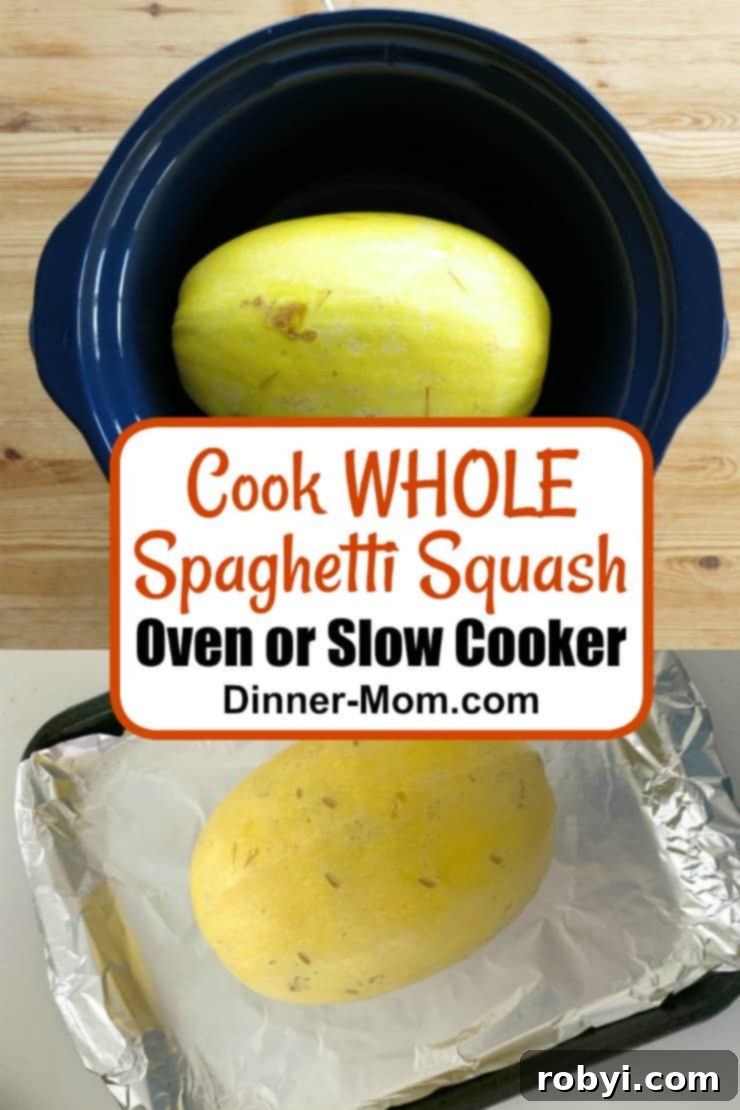
How to Use Cooked Spaghetti Squash
Once you have a batch of perfectly cooked spaghetti squash, the culinary possibilities are endless! Its mild flavor makes it a fantastic canvas for a wide array of seasonings and pairings. Here’s an ever-growing list of delicious and healthy ideas to inspire your next meal:
- Simple Seasoning: For a quick and healthy side, toss the strands with a pinch of salt and freshly ground black pepper. A drizzle of olive oil or a knob of butter can enhance the flavor further.
- Pesto Perfection: Stir in your favorite pesto sauce for a vibrant and aromatic dish. Top with grilled chicken, sautéed shrimp, or any protein you love for a complete meal.
- Classic Marinara: Mix with warm marinara sauce, add savory meatballs, and sprinkle with grated Parmesan cheese for a comforting, low-carb “spaghetti” dinner.
- Butter & Garlic: Sauté with garlic and butter (or olive oil) until slightly browned for a rich, flavorful side.
- Cheese Delight: Toss with a blend of melted cheeses like mozzarella, cheddar, or Gruyère for a decadent and satisfying dish.
- Asian Inspired: Stir-fry with soy sauce (or tamari), ginger, garlic, and your favorite vegetables for a healthier take on noodle bowls.
- Lemon Herb: A squeeze of fresh lemon juice and a sprinkle of chopped fresh herbs like parsley, chives, or basil can brighten up the flavors beautifully.
- Creamy Sauce Base: Use it as a base for creamy sauces made with dairy or non-dairy alternatives, adding ingredients like spinach, mushrooms, or sundried tomatoes.
Or, try one of these fantastic healthy recipes specifically designed to highlight spaghetti squash:
- Spaghetti Squash Alfredo – Just 5 Ingredients! – A creamy, cheesy delight that’s surprisingly simple.
- Spaghetti Squash Pizza Crust Recipe – An innovative way to enjoy pizza while keeping it low-carb and gluten-free.
- Easy Spaghetti Squash Soup – A comforting and nutritious soup perfect for a light meal.
- Spaghetti Squash Au Gratin Casserole or Cups – A rich, cheesy casserole that makes a wonderful side or main dish.
Would you like more easy, healthy, carb-conscious recipes?
Cook Spaghetti Squash Whole (Slow Cooker or Oven)
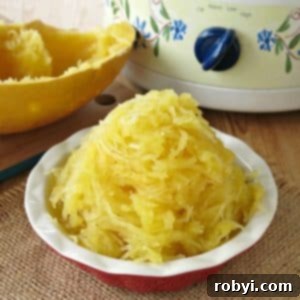
Cook whole spaghetti squash in a slow cooker or roast it in the oven. No cutting required until it’s cooked and easy to cut in half!
Prep Time: 15 minutes
Cook Time: 4 hours
Resting Time: 10 minutes
Total Time: 4 hours 25 minutes
Servings: 4 servings
Author: Marjory Pilley
Equipment
- Slow Cooker – Programmable
- Sharp Knife
- Baking Sheet (for oven method)
- Fork
- Cutting Board
Ingredients
- 1 spaghetti squash (medium; about 2-3 pounds)
- Salt and pepper to taste
Instructions
- Wash the outside of the spaghetti squash thoroughly.
- Stab all over the outside gourd with a sharp knife to allow steam to escape while cooking. Insert the tip about ½ inch deep. Make at least 10 cuts or more for larger gourds to ensure safety and even cooking.
Slow Cooker Method
- Place the whole, pricked spaghetti squash in a slow cooker and cover with the lid.
- Cook on LOW for 5-6 hours or on HIGH for 3-4 hours. The cooking time will vary based on the size and shape of your spaghetti squash. It is done when a knife can be inserted into the skin with very little effort.
- Allow the spaghetti squash to cool for about 10 minutes before carefully removing it to a cutting board using oven mitts or a towel.
- Cut the spaghetti squash in half lengthwise or crosswise (for longer strands) and remove the seeds and fibrous center.
- Use a fork to scrape the cooked spaghetti squash strands from the gourd.
- Season with salt and pepper to taste and enjoy immediately, or use in your favorite recipe.
Roast in Oven Method
- Preheat your oven to 425 degrees Fahrenheit (220 degrees Celsius).
- Place the whole, pricked spaghetti squash on a sturdy baking sheet.
- Roast for about 30-45 minutes (depending on size), rolling it over halfway through the cooking time to ensure even roasting.
- Allow the spaghetti squash to cool for about 10-15 minutes before carefully removing it to a cutting board using oven mitts or a towel.
- Cut the spaghetti squash in half lengthwise or crosswise (for longer strands) and remove the seeds and fibrous center.
- Use a fork to scrape the cooked spaghetti squash strands from the gourd.
- Season with salt and pepper to taste and enjoy immediately, or use in your favorite recipe.
Notes
Check out process pictures and more details in the sections above!
Expert Tips:
- When buying spaghetti squash, always make sure the gourd will comfortably fit inside your slow cooker or on your baking sheet.
- For long, pasta-like strands, cut the spaghetti squash in half crosswise (around the equator). For shorter strands, cut it lengthwise. See pictures and detailed explanations above.
- If you prefer a softer texture, you can return the spaghetti squash to the oven or slow cooker for additional cooking, even after it has been cut in half.
- Store cooked spaghetti squash noodles in an airtight container or bag in the refrigerator for up to 5 days.
- For longer storage, freeze cooked spaghetti squash noodles in a freezer-safe container or bag for up to 3 months. To defrost, transfer the container to the refrigerator.
- Defrosted noodles can be easily reheated on the stove-top, in a microwave, or directly used in your favorite recipes.
- If your cooked spaghetti squash seems too watery, place it in a strainer and gently press out the extra liquid before using.
Nutrition
Calories: 75kcal | Carbohydrates: 17g | Protein: 2g | Fat: 1g | Saturated Fat: 1g | Sodium: 41mg | Potassium: 261mg | Fiber: 4g | Sugar: 7g | Vitamin A: 290IU | Vitamin C: 5mg | Calcium: 56mg | Iron: 1mg
Nutritional and Food Safety Disclaimer
Grab 5 Low-Carb Sauces and get more easy, healthy recipes! JOIN HERE


